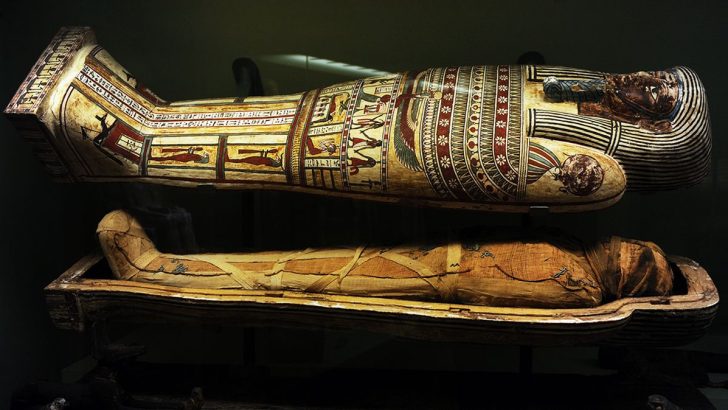Egyptian pharaoh’s mummy digitally unwrapped for first time
The mummified body of an ancient Egyptian pharaoh has been studied for the first time in millennia after being digitally “unwrapped”.
The mummy of Amenhotep I, who ruled from 1525 to 1504 BC, was found at a site in Deir el-Bahari 140 years ago.
However, archaeologists have refrained from opening it in order to preserve the face mask and bandages.
Computed tomography (CT) scans have now revealed previously unknown information about the pharaoh and his burial.
“We got to see the face of the king that has been wrapped for more than 3,000 years,” Dr Sahar Saleem, professor of radiology at Cairo University’s Faculty of Medicine and lead author of the study published in the journal Frontiers in Medicine, told the BBC.
NASA’s Webb telescope launches to see distant worlds
NASA’s James Webb Space Telescope launched at 7:20 am EST Christmas Day on an Ariane 5 rocket from Europe’s Spaceport in French Guiana, South America.
A joint effort with ESA (European Space Agency) and the Canadian Space Agency, the Webb observatory is NASA’s revolutionary flagship mission to seek the light from the first galaxies in the early universe and to explore our own solar system, as well as planets orbiting other stars, called exoplanets.
“The James Webb Space Telescope represents the ambition that NASA and our partners maintain to propel us forward into the future,” said NASA Administrator Bill Nelson.
Ancient DNA reveals the world’s oldest family tree
Analysis of ancient DNA from one of the best-preserved Neolithic tombs in Britain has revealed that most of the people buried there were from five continuous generations of a single extended family.
By analysing DNA extracted from the bones and teeth of 35 individuals entombed at Hazleton North long cairn in the Cotswolds-Severn region, the research team was able to detect that 27 of them were close biological relatives. The group lived approximately 5700 years ago – around 3700-3600 BC – around 100 years after farming had been introduced to Britain.
Published in Nature, it is the first study to reveal in such detail how prehistoric families were structured, and the international team of archaeologists and geneticists say that the results provide new insights into kinship and burial practices in Neolithic times.



